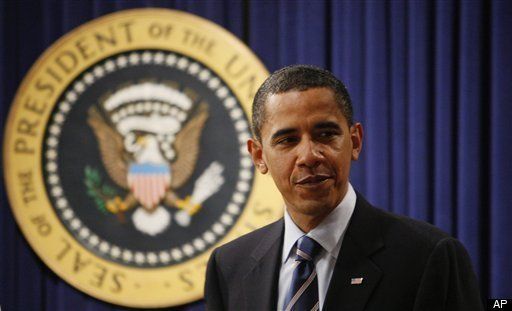
Once again, Iraq and Afghanistan are making headlines nearly every day. But
while most media attention focuses on car bombings and combat casualties,
other disturbing events in the region are slipping through the news cycle
almost unnoticed.
A short item that caught my attention on October 5th revealed that
between 2002 and 2008, the US sent Pakistan $6.6 billion to help the
Pakistani armed forces battle Islamic militants. But two US Army generals
told the Associated Press that only $500 million was used for military aid
and the rest was diverted "to the domestic economy and other causes, such as
fighting India."
Think about that: Six billion dollars of our money vanished into the
bureaucracy of then-president Pervez Musharraf with no auditing or other
accountibility. I wonder how many other people saw the story? I found it
on page A-12 in my local paper.
Later, on October 11th, I read a story on page A-14 about Baghdad
residents who held a street march to demand improvements in public services.
In the 7th paragraph was this fact: "Iraq was twice forced this year to
slash it's budget, from $79 billion to $58.6 billion, because of falling oil
prices." These kinds of dots are easy to connect. Budget shortfalls
excacerbate infrastructure problems which fuel public discontent thus
creating new opportunities for extremists to exploit.
I can describe our predicament in one sentence. It was spoken by
President Harry Truman in late November of 1950. Having been informed that
a full scale Chinese intervention was underway in Korea and UN forces were
starting a massive retreat, the President met with his staff and said,
"We've got a terrific situation on our hands." He knew the Chinese attack
would create serious new problems for American defense strategy, diplomatic
policy, and domestic politics, problems that would persist long after he
left office.
If I had five minutes alone with President Obama, my suggestion would be
to reach out quickly and communicate the importance of the big picture to
the entire country. For one moment, put aside the debate over sending more
troops into combat and talk about the long road ahead.
This is exactly what President Franklin Roosevelt did with a radio
address on the evening of February 23rd, 1942. It was one of his most
compelling "fireside chats," and prior to the event FDR put out the word
that he wanted every person listening to have a map of the world on hand.
In her book No Ordinary Time, historian Doris Kearns Goodwin says the
president told his speechwriters the maps were important because "I want to
explain to the people something about geography--what our problem is and
what the overall strategy of the war has to be."
For Mr. Obama, I'd suggest a special appearance on CNN's Situation
Room, with maps displayed on every giant screen. Show us the vastness of
territory that encompasses Pakistan, Afghanistan, Iraq, and Iran. Then keep
going west, through Syria, Jordan, Egypt, Libya, and Algeria. Remind
everyone that when longtime leaders such as Gaddafi and Mubarak pass on, the
transition to new regimes may be difficult and dangerous, and create an entirely
set of policy problems.
I'd also urge Mr. Obama to look directly into the camera and issue this
challenge: "To all viewers between the ages of 18 and 34---how do you
envision daily life in America fifteen years from now? Your generation
will spend a long time dealing with the the fallout from events that will
taking place on all those big maps in the near future."
During the Vietnam era, college campuses were part of an intense
national debate about the war. But these days there are no "Teach-ins" and
you never hear the term "student mobilization." The obvious reason for
this difference is that young people these days aren't being drafted.
We can debate the pros and cons of military conscription endlessly. But
no one can dispute that it was a powerful motivator in getting huge numbers
of Americans to think seriously about US military commitments in Vietnam and
throughout southeast Asia.
Conscription meant that millions of draft-eligible citizens, and their
families, were directly connected to foreign policy decisions. When
President Nixon ended the draft, that connection was broken.
I'm not calling for a reinstatement of the draft. But it would be great
if someone figured out a way to bring back the collective energy of those
years and focus it on a wide range of current issues. How long should we
support combat operations in a foreign country? What are the limits of US
military power in the Islamic world? How much money and manpower are we
willing to expend in that region during the next ten or fifteen years?
Having said all this, I now realize we have TWO terrific situations on
our hands. The first one encompasses myriad potential threats in a volitile
region of the world. The second is this fact: too many Americans in every
age group are unaware, or don't care, that the first situation even exists.